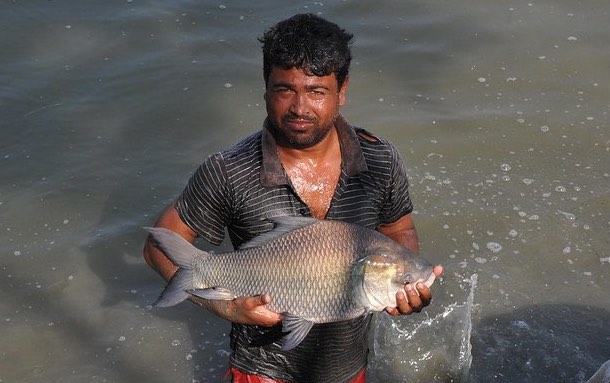The making of Bangladesh's Blue Revolution
- From
-
Published on
06.11.19
- Impact Area

Though fish has long been the largest source of protein in Bangladeshi diets, for decades persistent high prices made it difficult for most to acquire. In the early 1990s, per capita annual fish consumption was a low 10 kilograms. In 2005, the UN Food and Agricultural Organization (FAO) suggested that even reaching a per capita annual consumption of 18 kg would be a remarkable improvement. But only five years later, national survey estimates put the annual per capita consumption of fish in Bangladesh at 23 kg.
It was the exponential growth in Bangladesh’s aquaculture industry that made the difference. This remarkable transformation is assessed and documented in the new IFPRI book The Making of a Blue Revolution in Bangladesh: Enablers, Impacts, and the Path Ahead for Aquaculture, edited by South Asia Director Shahidur Rashid and Senior Research Fellow Xiaobo Zhang. The book lays out the factors that led to this revolution, the implications for poverty and welfare, and the prospects for aquaculture going forward. It was launched at an event Oct. 27 in Dhaka.
Photo Credit: Finn Thilsted/WorldFish
![]()
Related news
-

Australia partners with International Livestock Research Institute to upskill researchers from Africa and Asia
International Livestock Research Institute (ILRI)13.11.25-
Food security
-
Poverty reduction, livelihoods & jobs
Australia has joined forces with the International Livestock Research Institute (ILRI) to support th…
Read more -
-

Next-gen rice lines top check varieties at 7.5 t/ha in ESA
International Rice Research Institute (IRRI)11.11.25-
Food security
MOROGORO, Tanzania (8 October 2025) — Elite rice lines are outperforming the current popular varie…
Read more -
-

QTL Profiling Now Live on EBS
International Rice Research Institute (IRRI)11.11.25-
Food security
QTL profiling is now integrated into the EBS Platform’s MDA module. Teams across CGIAR research…
Read more -
